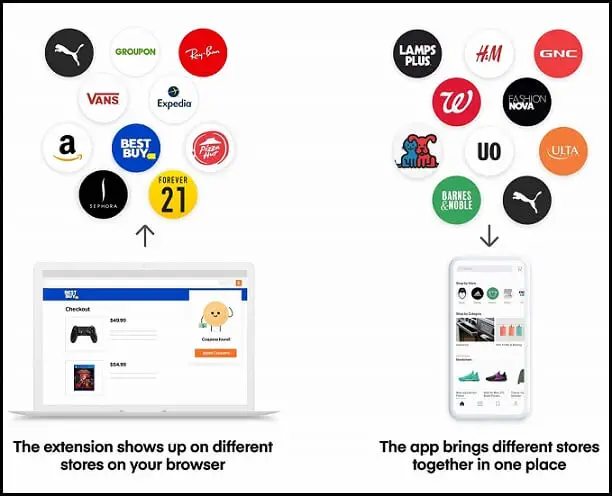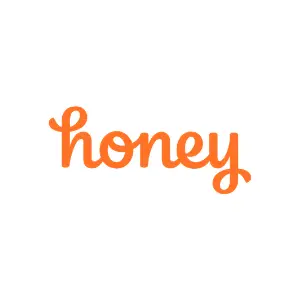In 2012, the same year, when Facebook acquired Instagram for $1 billion, Honey, which was acquired for $4 billion by Paypal in 2019, launched as a Chrome browser extension.
Generally, browser extensions function as a growth channel for an existing product made by the developers of the products themselves or as 2nd order inventions made on top of existing products, made by enthusiastic users.
Amazon’s official Kindle extension is an example of the former, and Send to Kindle, an unofficial extension made by a third-party organization, is an example of the latter.
Browser extensions are rarely considered an individual business or the primary means to grow a business, but there are outliers like Honey & Pocket (acquired by Firefox).
Honey’s Founding Story
The end of the first decade of the 21st century marked the beginning of a new era — the mobile revolution.
In 2012, Fred Wilson, an acclaimed VC, wrote a blog titled, “Mobile is where the growth is.” By then, most techies subscribed to the idea that mobile apps were the next big thing. But Honey launched as a desktop-first application in a world headed towards a mobile-first future.
Ryan Hudson, the co-founder of Honey, stumbled across the idea while ordering pizza online. Frustrated by the idea of scouting many coupon sites to save some money and the chances of wasting time in the case of not finding a working coupon, he wondered how efficient it would be to automate the task.
Six weeks later, Honey launched as a Chrome browser extension in October 2012.
In the same year, Google Chrome became the most widely used browser, overtaking Mozilla Firefox & Microsoft’s Internet Explorer. A year ago, in February 2011, Google had launched the Chrome web store. For Honey, the launch time was opportunistic, keeping aside the futuristic mobile-first variable.
How it launched was, however, unplanned, and what happened post-launch, unexpected. Ryan Hudson & George Ruan, the two co-founders, had shared the product with some beta testers hired through Amazon’s Mechanical Turk.
One of these testers leaked the product on Reddit. And all of a sudden, Honey saw an influx of traffic. The next day, someone cross-posted it on another subreddit, something Reddit users often do.
After the unplanned Reddit launch, Honey began to grow organically through word of mouth. But funding was still hard to come by because investors were keen on investing money in startups solving the mobile shopping experience, not desktop.
Ryan & George bootstrapped Honey’s operation — putting in some personal investment & taking some from parents. They paid themselves nothing and convinced friends to work for free.
Ryan ran out of money at one point, and he had to work for another company for about a year, running Honey on the side. The other co-founder, George Ruan, continued to work full-time.
The relentlessness of the founders paid off because after the user base grew to a few hundred thousand users, there were finally able to raise a seed round of $1.8 million in 2014. The investor funding turned out to be crucial as it helped Honey grow the product and attract more investment.
Honey Business Model
Honey makes money through affiliate marketing, meaning it gets commission for driving sales to the retailers/merchants. These commissions are usually between the range of 0.5-10% of the sale amount. In the case of higher-margin categories like luxury fashion, the commissions even go ad high as 20% of the sale amount.
But the above explanation is a simplistic one. For a more detailed understanding, we need to understand how Honey has evolved as a product since its launch as a chrome extension for finding coupons in 2012.
Around 2016, the time when Honey raised its Series A round of $4 million, Honey had around 20 employees. The number grew from 50 in 2017 to 100 by 2018. At the beginning of 2019, Honey had 200 employees. By March 2020, the number had grown to 390.
The expedited employee growth helped launch extended products and services, turning Honey into much more than a browser extension.
At the time of writing, Honey’s website says its mission is “To make the world more fair.”
Elaborating further, Honey says,
“We believe everyone should have the information they need to make the best decisions with their money. It’s easy to spend money online. But getting the most value is a different story. Take shopping for example. Finding the best deal takes time, prices change depending on the buyer, and payment methods aren’t always in your best interest. We don’t think that’s fair. Honey is here to help. We give everyone the tools it takes to find the best savings, perks, and all around value. And we make them free and easy-to-use. So you can always spend with confidence. If it involves spending money online, we’ll be there to help.
The reality of what has guided Honey’s direction, as a company, in the last few years & what will continue guiding it in the future is evident in the mission statement’s elaboration. The last line, which says, “If it involves spending money online, we’ll be there to help.”, is particularly interesting, considering its broad nature.
In recent years, Honey has launched its website & mobile App, a reward program & a price tracking tool. Let’s go through each of them to see how the pieces fit into the overall Honey strategy.
Honey’s Website & Mobile App
Today, Honey’s first product, its chrome browser extension, helps more than 17 million people find coupons on over 30,000+ sites.
While the investors who rejected Honey were wrong about the thesis that the world did not need a coupon finding desktop browser extension, they were right in predicting that mobile would constitute a sizeable chunk of the online shopping market.
Not having a mobile presence would mean losing out on affiliate commission for purchases made using mobile. Another disadvantage of remaining a browser extension would be that Honey would be useful only in the conversion phase ( the last stage ) of the shopping funnel.
So, on its Website and App, Honey aggregates millions of products from thousands of stores, adds its native coupon intelligence to the mix, turning itself into a lucrative place for buyers even in the shopping funnel’s discovery phase ( the first stage ). A remarkable feature of the Honey app is that it gives users the convenience of a single cart, even if they choose items from different stores.

Honey Gold Program
Honey Gold is a loyalty program that passes on a portion of the affiliate earnings back to Honey Gold members.
The reward program is a win-win for both — buyers and Honey. It functions as another reason for Honey members to begin shopping using Honey, adding a bonus on top of the native coupon savings.
Honey’s Droplist Tool
Let’s say you’ve been eyeing a particular gym kit on Amazon for some time, but when you finally decide to make the purchase, you realize the price has increased.
Using Honey’s Droplist tool, you can verify the product’s price history & set an alert to notify you when the price drops again.
Even though price drop and price history tools are nothing new, many online shoppers use them for making purchases. The Droplist tool helps Honey capture those buyers early and makes the overall Honey shopping experience more valuable.
Using all its products — coupon finding browser extension, website, and mobile app, Honey Gold & the droplist tool — users of Honey save an average of $126 per year on an average discount of 17.9% per order across 30,000+ merchants.
Honey’s Paypal Acquisition
When Paypal, the fintech giant, acquired Honey for $4 billion in 2019, it became the talk of the town. Some thought it was a brilliant move. Some were baffled by the astronomical acquisition price. To arrive at a balanced perspective, let’s see what each party brought to the acquisition table.
Honey, at the time of the announcement, worked with 30,000 merchant websites and had helped its 17 million members save more than $2 billion until then. In 2018, the company was profitable on a net income basis with a $100 million revenue and growing more than 100% annually.
With its shift of trying to transition into a shopping aggregator app by creating a single checkout experience, Honey was also reaching users in the shopping funnel’s discovery phase. On the other hand, Paypal comes into the picture only towards the end of the buying journey, in the transaction phase.
But Paypal brought 300 million customers, 24 million merchant partners, the experience of working scaling in over 200 markets, and, of course, $4 billion to the acquisition table. For Honey, which operated in around 9 markets, Paypal’s global scaling expertise would come in handy.
Apple, Amazon, Google & Facebook are all interested in becoming the default payment solution. The payment space is more competitive than ever. Not only does Honey give Paypal an entry into the early stages of the shopping funnel, but it will also give access to the pre-purchase funnel buyer activity, which they could use in multiple ways. One use case could be understanding user intent in real-time and influencing purchase behavior even before the payment page. But was acquiring Honey at a 40x multiple of its 2018 revenue worth it? Only time will tell.
Read More Case Studies
Tesla Business Model Case Study
Netflix Business Model Case Study
WhatsApp Business Model Case Study

